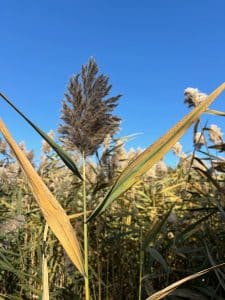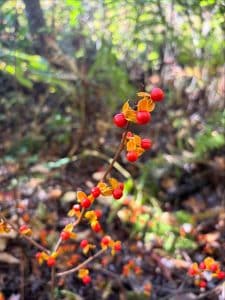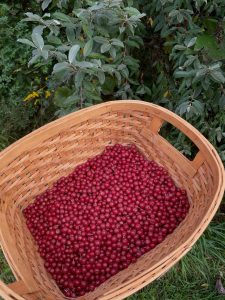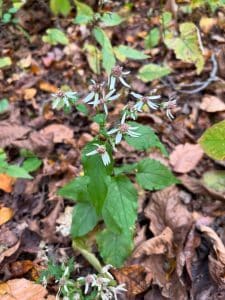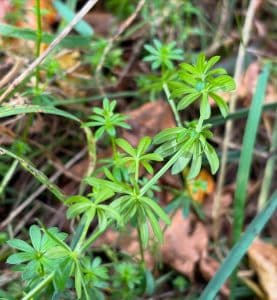Page Created by Connecticut Foraging Club
Upcoming Events | Meet the Instructors | Plant Archive | Mushroom Archive
----------------
Upcoming Events | Meet the Instructors | Plant Archive | Mushroom Archive
----------------
Japanese honeysuckle (Lonicera japonica) is an invasive vine. It has no predators in New England, which allows it to proliferate. The plant has edible and medicinal uses, as well as toxic parts.
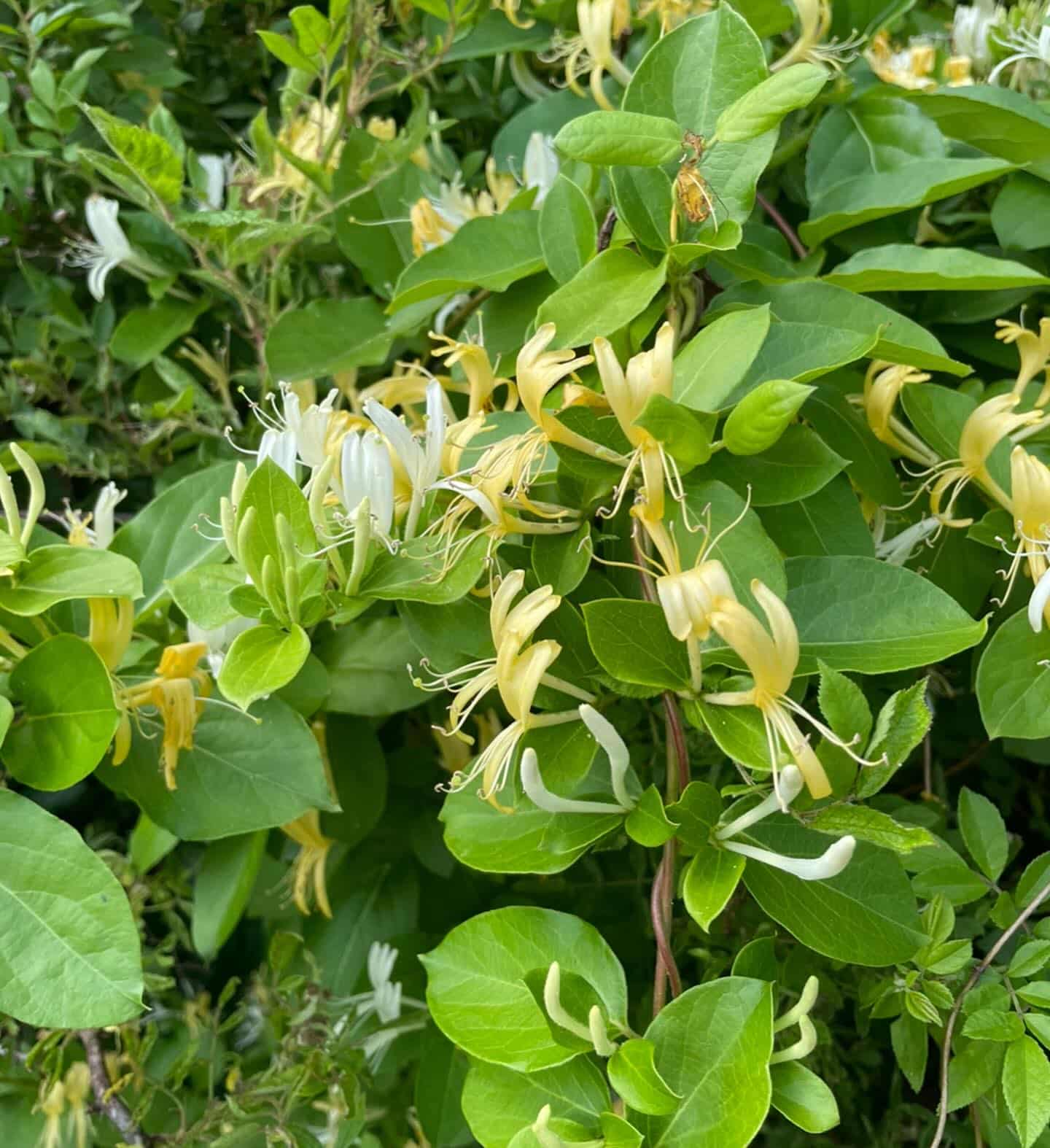
Japanese honeysuckle can be found in woodland clearings, meadows, and fences.
Young vines are fuzzy. Older vines turn woody and brown. The ovate leaves grow opposite each other. The trumpet-shaped flowers start as white and become yellow with age. They bloom late spring to early summer. The flowers grow in pairs along the vine, not just at the end of the vine.
Young Japanese honeysuckle vine tips are edible after cooking. Flowers are edible raw or cooked. They have a drop of nectar inside the blooms which is often sucked out of the flower by children. The blossoms can be turned into a tea which can be drank or used topically to treat itchy skin. Blossoms also make a great jelly and wine.

Japanese honeysuckle leaves and berries are mildly toxic.
Japanese honeysuckle has been used medicinally to treat viruses and rheumatoid arthritis.

There are over 100 types of honeysuckle, many with toxic berries. Most flowers are considered edible, but not all. Many of the other honeysuckle species grow as bushes. We have some native honeysuckle species that are vines. However, native honeysuckles have smooth stems and smaller flowers.
Picking Japanese honeysuckle flowers means the plant will have fewer fruits, which could help to slow the spread of this invasive plant.
--
Written by Amy Demers, founder of the Connecticut Foraging Club. To learn more about foraging in Connecticut, check out our upcoming classes.


